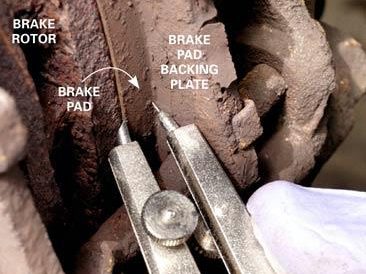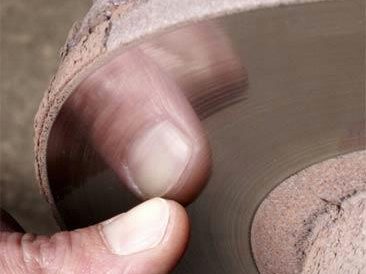
Check Brake Pad Thickness
Required Tools for This Project:
Have the necessary tools for this DIY project lined up before you start – you’ll save time and frustration.
* Tape measure
* Compass
How to do your own brake check:
First find a safe area to test your brakes and check for brake pedal pulsation. Brake to a stop from about 50 km/h. The pedal should feel smooth with no pulsation at all. Then try braking at highway speeds. If you get pulsation, the rotors are “warped” and must be machined or replaced.
With the engine cold, remove a front wheel. Then use a compass and a tape measure to check the brake pad thickness. A new brake pad is about 1/2 in. thick. Replace the pads when they get down to 1/8 in. Compare the readings top to bottom; they shouldn’t vary by more than 1/16 in. If they do, the caliper isn’t releasing properly and must be serviced.
Measure the pad thickness by placing the compass points between the backing plate and the rotor. Measure the thickness at both the top and the bottom of the brake pad.

Check the Rotor’s Condition
Finally, check the rotor disc for grooves. Run your fingernail across the rotor surface. If your nail catches in deep grooves, the rotors should be machined or replaced as a pair.
In the market for a new or used car? Check out our car-buying guide!
Explore Reader’s Digest Cars.